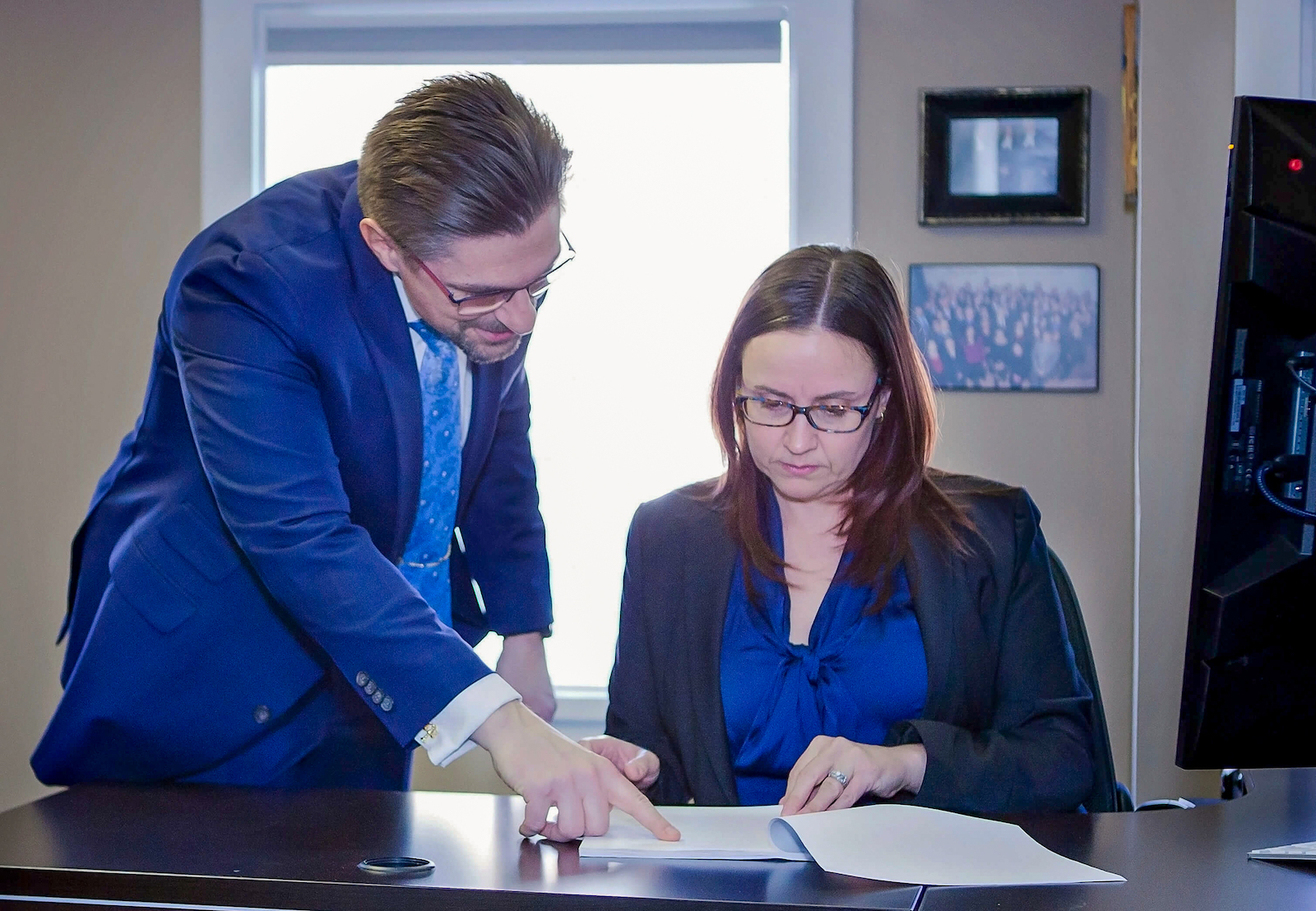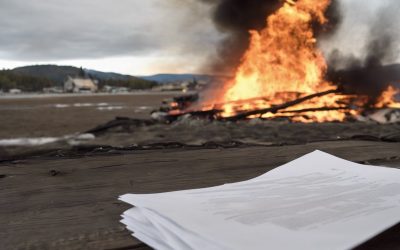This week’s top three summaries: R v Kinamore, 2025 SCC 19: Crown s.276 and #sexual inactivity, R v Chiarelli, 2025 ONCA 428: lay #trafficking opinion, R v Attachie, 2025 BCCA 183: Nahanee and GP #mitigation
R v Kinamore, 2025 SCC 19
[June 13, 2025] Sexual History Evidence: Crown Led Evidence and Sexual Inactivity [Reasons by Wagner C.J. with Karatkatsanis, Côté, Rowe, Martin, Kaiser, Jamal, O’Bonsawin and Moreau JJ. concurring]
AUTHOR’S NOTE: This case harmonizes the common law rules on Crown-led sexual history evidence with the statutory regime under s. 276, which governs the Defence’s use of such evidence. The Court confirmed that the Crown must seek advance judicial authorization before introducing sexual history evidence related to the complainant, in a process that mirrors the s. 276 application required of the Defence. Importantly, the Court clarified that evidence of sexual inactivity—such as virginity or expressions of disinterest in sexual activity with the accused—also falls within the scope of s. 276. As a result, the Crown cannot introduce prior statements of disinterest in sex with the accused without first obtaining the Court’s approval.
R v Chiarelli, 2025 ONCA 428
[June 12, 2025] Lay Opinion Evidence: Possession for the Purpose of Trafficking [Reasons by Favreau J.A. with B. Zarnett J.A. and Coroza J.A. concurring]
AUTHOR’S NOTE: Opinion evidence is generally inadmissible unless properly qualified and necessary. In this case, police officers gave unprompted opinion evidence before a jury, stating that items found were consistent with drug trafficking. Rather than intervening, the trial judge allowed the Crown to rely on this opinion in closing and emphasized the Crown’s position in the jury charge.
The Court of Appeal overturned the conviction, finding that the trial judge erred by failing to immediately hold a voir dire to determine the admissibility of the opinion evidence. The Court emphasized the importance of a timely judicial response, including the possibility of a limiting instruction to the jury to prevent unfair prejudice.
A. OVERVIEW
[1] OVERVIEW The appellant, Adam Chiarelli, was found guilty by a jury of possession of cocaine for the purpose of trafficking. The police found the cocaine in the trunk of a car driven by Mr. Chiarelli. There were two passengers in the car.
[2] Mr. Chiarelli appeals his conviction on several grounds, including that the trial judge failed to provide a limiting instruction on the use of opinion evidence provided by the two police officers who conducted the traffic stop….
[3] I would allow the appeal on the basis that the trial judge erred in failing to provide a limiting instruction regarding the opinion evidence of the arresting officers….
[6] Officer Desroches then pursued the vehicle and conducted a traffic stop. Mr. Van de Ven was seated in the front passenger seat and Mr. Proctor was sitting in the back. While they were on the roadside, Officer Desroches took steps to suspend Mr. Chiarelli’s driver’s licence for seven days and to impound the car pursuant to the Highway Traffic Act, R.S.O. 1990, c. H.8. He called for a tow truck and another officer so that they could transport the vehicle and all three men to a nearby gas station.
[7] The officer who arrived on the scene in response to the call from Officer Desroches call was Scott Orsan. After Officer Orsan arrived, Mr. Chiarelli and his two passengers were placed in police cruisers and taken to the nearby gas station, along with Mr. Chiarelli’s car. Once they arrived at the gas station, Officer Orsan noticed an odour of raw marihuana coming from the vehicle. He searched the inside of the car, and found two cannabis cigarettes and a marihuana grinder, amongst other items, inside a jacket pocket. All three men were then arrested for possession of cannabis contrary to the Controlled Drugs and Substances Act, S.C. 1996, c. 19.
[8] The officers then continued their search of Mr. Chiarelli’s car. When they searched the trunk, they found a vacuum-sealed brick of cocaine inside a red shopping bag. The cocaine was later weighed at just over a half-kilogram.
C. ISSUES AND ANALYSIS
[16] Mr. Chiarelli raises several issues on appeal:
a. Officers Desroches and Orsan gave inadmissible opinion evidence and the trial judge failed to give an appropriate limiting instruction;
Issue 1: The officers’ opinion evidence was inadmissible
(1) General principles
[17] This court has previously cautioned against the improper use of opinion evidence from police officers, including in the context of drug offences: R. v. Nguyen, 2023 ONCA 531, 429 C.C.C. (3d) 192, at paras. 48-53; R. v. Jenkins, 2024 ONCA 533, 439 C.C.C. (3d) 499, at paras. 20-23.
[18] Opinion evidence, even from police officers, is presumptively inadmissible; to be admissible it must satisfy the criteria for expert evidence or for lay opinion evidence: Nguyen, at para. 48, citing R. v. D.(D.), 2000 SCC 43, [2000] 2 S.C.R. 275, at para. 49; Jenkins, at para. 21.
[19] To be admissible as expert evidence, police officers have to be qualified as experts to provide the opinion at issue, and their evidence must otherwise meet the admissibility criteria: R. v. Mohan, [1994] 2 S.C.R. 9, at pp. 20-25; White Burgess Langille Inman v. Abbott and Haliburton Co., 2015 SCC 23, [2015] 2 S.C.R. 182, at para. 19.
[20] As this court pointed out in Nguyen, at para. 52, it is not uncommon for expert evidence to be required on issues of drug trafficking. For example, in R. v. Sekhon, 2014 SCC 15, [2014] 1 S.C.R. 272, at para. 18, an expert witness provided evidence about the “chains of distribution, distribution routes, means of transportation, methods of concealment, packaging, value, cost and profit margins”. The court noted in Nguyen, at para. 52, that this type of evidence often requires “specialized knowledge beyond what may ordinarily be acquired by police officers without specific training”. As another example, in this case, on consent, D.C. Browne’s report was admitted as expert evidence for the purpose of establishing that the quantity and packaging of the cocaine were consistent with possession for the purpose of trafficking.
[22] In some circumstances, the opinion evidence of lay people, including police officers, may be admissible. Lay opinion evidence is admissible where witnesses give “a compendious statement of facts that are too subtle and too complicated to be narrated separately and distinctly”: R. v. Graat, [1982] 2 S.C.R. 819, at p. 841; Nguyen, at para. 53. In other words, where a lay witness testifies about their observations, if it is necessary for them to state their opinion about the meaning of those observations in order to describe them coherently, then the opinion will be admissible. As explained in Jenkins, at para. 23, where a police officer gives evidence about surveillance observations, “they can relate the evidence of the factual observations they made without providing the further opinion evidence that the conduct observed is consistent with drug trafficking”. [Emphasis by PJM]
[23] Based on these principles, in Nguyen, this court found that the trial judge made an error in admitting the opinion evidence of a police officer who testified that the acts of picking up and dropping off property in that case were consistent with drug-related activity. The court held that the officer’s evidence was not admissible as expert evidence because he was not qualified as an expert and because it did not meet the necessity requirement as it was not technical or a matter on which ordinary people are likely to form incorrect opinions: Nguyen, at para. 51. The court also did not accept that the officer’s evidence was admissible as lay opinion evidence because the officer “did not have to offer the opinion that the interaction he saw was consistent with drug trafficking to describe effectively the factual observation he had made”: Nguyen, at para. 53. Nevertheless, the court ultimately dismissed this ground of appeal based on the curative proviso, finding that the error was so harmless that it could not have impacted the verdict. In reaching this conclusion, at paras. 56-57, the court considered that the case was decided by an experienced trial judge, that the opinion offered by the officer was one that the trial judge could have reached on her own and that she made no reference to the officer’s opinion evidence in her reasons.
[24] In Jenkins, five police officers testified regarding their observations of various interactions between the accused and others. As part of the examination in-chief of each officer, the Crown asked what the police officers made of those interactions based on their experience. In each case, the police officers gave their opinion that the interactions were consistent with drug trafficking. The trial judge ruled that their evidence was admissible as lay opinion evidence. This court found that it was an error to admit the evidence for several reasons: 1) the officers were not qualified as experts in drug trafficking (para. 27); 2) the officers’ conclusory opinions were not necessary for the jury to reach a correct judgment on the evidence (para. 28); and 3) the officers could convey their factual observations without giving the added opinion that the interactions at issue were consistent with drug trafficking (para. 29). In Jenkins, this court did not apply the curative proviso. The court noted that this was a jury trial and, unlike in Nguyen, it was not possible to know whether the jury relied on the improper opinion evidence….
(2) Relevant testimony, submissions by the Crown and jury charge
[25] In their evidence at trial, Officers Desroches and Orsan both gave evidence that the items they found in the vehicle were consistent with drug trafficking.
[26] Officer Desroches testified that the items found in the car were consistent with “transporting” or “running” drugs:
A. The reason […] I made a note of [those items] in my notebook later at the office and I didn’t at the Petrocan […] is because not that I didn’t notice them at the Petrocan, it’s that after I found the cocaine, the – and that large an, an, an amount, I made definite note of that at the office because a lot of those articles are consistent with transporting drugs.
Q. Burger King cups, that’s just garbage from going through drive-throughs?
A. Yeah, each individual item alone means nothing. But together collectively, it – to me, in my experience, and then having taken drug, you know, enforcement training as well, it – everything in totality points a little bit more towards running, running drugs. [Emphasis added.]
[27] In his testimony, Officer Orsan also described the items he found when searching the car and provided his opinion that these items were consistent with drug trafficking:
I saw that there was a rear-view – you know those little black trees, they’re like a Black Ice air freshener, the small trees. It was hanging from the rear-view so I’m like, Okay, that’s a really strong one of all the air fresheners. And then I saw that there was, like, fast-food cups in the centre console and then the, the smell of cologne was really fresh and strong in the vehicle and I’m, like, that, that – and with the marihuana and then, and then smelling that I’m, like, wow, that’s – those are, like, used as masking agents in my experience. Like, people just spray it so, Oh, the cops are here, and they spray it, right? So I’m just – in my experience. The – there were three cell phones in the glove box. There was one cell phone in the centre console. So that’s a lot of – that’s already from – as I remember that’s, that’s, like, five phones, right? Like they got three in the in the glovebox, one in the centre console, Proctor had one and, and possibly there was another from Van de Ven. I – there’s so many I just kind of lost track of, of how many there were. I found that Lacoste perfume in the glovebox as well. It’s kind of odd but not just – that’s probably where the smell’s coming from, but it’s a weird spot to put it. There were ZigZag rolling papers – that’s just a brand name for marihuana roll papers. Those were in the centre console as well so that’s, like, it’s not in luggage. It’s just out and open. So that put some flags up in my head. And the vehicle had like a really lived-in look, consistent with what I thought in my experience I’ve seen with people who are running drugs, they don’t want to leave their vehicle because they don’t want to leave product in the vehicle. So that’s just an opinion. There were granola wrappers from Kirkland. So Kirkland’s a Costco brand if you don’t know. Like, you can get them in bulk. But these wrappers just were everywhere in the car, which is just odd to me. And the was a, a battle – a couple of “Battleship” boards in the rear seats. Nothing really – other than that in there. [Emphasis added.]
[28] In closing submissions, the Crown argued that the officers’ evidence regarding the significance of the items found in the car pointed to Mr. Chiarelli’s guilt:
I want to bring a few things to your attention that will hopefully reenforce the notion that Mr. Chiarelli had the requisite knowledge and control of the cocaine in the trunk of his vehicle that day. So at the time that this vehicle was pulled over and the gentlemen are arrested you’ll note according to the officer testimony that the vehicle had a certain lived in look to it. This is according to P.C. Scott Orsan. During a search numerous cell phones ended up being retrieved – during that search – and P.C. Desroches even mentioned during cross examination how the items throughout the vehicle in conjunction with the cocaine pointed to a more suspect, bigger picture.
[29] In her jury charge, the trial judge did not caution the jury against relying on the opinions of Officers Desroches and Orsan regarding the significance of the items found in the car….
(3) Analysis
[30] As in Nguyen and Jenkins, it was an error for the trial judge to admit the opinion evidence provided by the police officers. Their testimony that the items found in the car were consistent with drug trafficking was akin to the evidence of the officers in Nguyen and Jenkins.
[31] Officers Desroches and Orsan were not qualified as experts. Their evidence was not necessary for the jury to reach a correct judgment. Moreover, their 2025 ONCA 428 (CanLII) evidence did not meet the test for admissibility of lay opinion evidence. The officers could have conveyed their factual observations without giving the added opinion that the items at issue were consistent with drug trafficking.
[32] Unlike in Jenkins, the Crown did not actively solicit this opinion evidence. On the contrary, the officers both spontaneously offered the opinion that the items in the car were consistent with drug trafficking. In the circumstances, a limiting instruction may well have been sufficient. However, instead of giving a limiting instruction, the trial judge allowed the Crown to rely on the opinion evidence in closing and then highlighted the Crown’s view of the evidence in the jury charge. [Emphasis by PJM]
[33] Also, as in Nguyen, the fact that defence counsel at trial did not object is of no moment. Given how prejudicial opinion evidence can be, trial judges are to play a gatekeeping role in making sure opinion evidence is not improperly admitted: White Burgess, at para. 16; Nguyen, at para. 54.
[34] In this case, given that Officer Desroches’ opinion was spontaneous and unsolicited, after he gave his evidence, the trial judge should have immediately held a voir dire with counsel to address the admissibility of the evidence and to discuss whether a caution or limiting instruction to the jury was necessary….
[35] Accordingly, I find that it was an error for the trial judge to admit the police officers’ opinion evidence that the items they found in the car were consistent with drug trafficking or, at the very least, it was an error not to give a limiting instruction regarding those items.
E. DISPOSITION
[71] I would allow the appeal and order a new trial.






